We set off mid-morning to visit the hill-top town of Les Baux-en-Provence which is known not only for its medieval town clinging to a hill side but also its castle ruins perched on a plateau in the middle of the Alpilles chain of mountains. The drive to Les Baux was quite scenic, taking us into the Alpilles mountain range . We passed vineyards and olive groves in very dry land, surrounded by rugged mountains that jut out of the flat surroundings. Meghan skillfully managed to park in a narrow and windy parking lot close to town and we were grateful for it as it was a scorching hot day (30+ degrees).
We made our way up the steep cobblestone streets right to the top to visit the castle before it got even more crowded. The ruins are carved into, out of and on top of a rock 650 feet above the valley floor. In the 11th century, the feudal lords of Les Baux controlled about eighty towns in southern France. In 1426, Les Baux was incorporated into Provence and France. Les Baux's lords struggled to hang onto their independence and the French king responded by destroying the fortress in 1483. Later on, Les Baux regained some importance and became a hotbed for Protestantism in the 17th century. This attracted the wrath of Cardinal Richelieu (under the reign of Louis XIII), who ordered the siege and demolition of the castle. If that wasn’t enough, Louis ended up billing the residents of Les Baux for their demolition.
We walked around the windblown spur (baux in French) following a series of informative panels that brought the ruins to life. We were accompanied by our audioguide (who happened to be "Cherry the Cow" once again!) but the heat caused us to move quickly and eventually we only listened to stops that really interested us – we were very grateful for the strong winds though! The medieval siege weaponry was unbelievably large and we even saw the practice grounds where rocks were hurled when the weapons were being demonstrated.
One of the weapons looked like a giant slingshot and was called a “bricole”. It was used as an “anti-personnel” device, placed at the top of the ramparts and used to bombard an invading army. It could hurl cannon-ball like boulders up to 12 kg in size. A trained shooter (with the help of her team – yes, these were often operated by teams of twenty women because the men were operating the larger projectile weaponry) could fire rocks up to 80m at a rate one shot per minute!
It was difficult to imagine that 4,000 people once lived up on this spur but seeing two chapels, a bakery (which was reserved for the exclusive use of the lord), a large cistern and the shells of many houses, one could begin to believe this. As we walked out to the tip of the spur, we got magnificent views over the valley floor below, covered with vineyards and olive groves. We learned that olive trees have been cultivated since 600 BC and today there are over 290,000 olive trees in the area of Les Baux. Off in the distance, you could see one of the last remaining bauxite (which gets its name from the town) quarries, which is a mineral used to make aluminum.
When the fortress of Les Baux was built, it was chosen mainly for its strategic location and vantage point, but also because limestone is easy to cut and work with and hardens when exposed to the weather. Next, we made our way out of the direct sun and towards the main castle area. Along the way, we passed a most impressive battering ram, complete with a sturdy wooden frame (which was in turn covered in wooden panels, animal skins and turf) to protect the assailants from projectiles and burning materials hurled at the ram. Once past the ram, we were into the main living quarters of the castle. You could see the various rooms carved into the limestone walls and also the square holes at first-floor height where large timbers would have supported another floor. We scrambled around the ruins and at a couple spots were offered excellent views back on the entire castle and the medieval village below. It was really interesting to see how the castle had literally been built into the rock but hard to imagine living in such sparse conditions with adverse weather conditions – extremely hot in the summer and very cold in the winter with Mistral winds blowing through from the north. At one end of the 200m long castle, we came across the most enormous and elaborate dovecote we’ve seen to date. The right to own a dovecote was a lordly privilege that was abolished in Provence at the end of the 17th century.
Succulent pigeons were much appreciated fare on noble tables while their droppings played an important role as fertilizer. The pigeons were also used as carrier pigeons to transmit messages quickly over long distances. The dovecote opens to the south so that it is sheltered from the cold winds of the Mistral and the nests inside are hollowed directly out of the limestone. We thought of James when we saw the dovecote because the “hoot-toot”ing of the pigeons had been irritating him at every campsite we stayed at, almost as if they were following him. This dovecote would have held up to 2,000 birds in its peak usage!
Just before leaving the castle, we parked ourselves on a bench in the shade of a cypress tree and had a quick picnic lunch. We watched a large group of school kids enter to begin their tour and they looked quite unfazed by the heat so we assumed that they must be from the area. After lunch, we wandered down through the medieval village, poking our heads into various shops. We stopped for a cool drink of 'granita’ which is a fancy name for a slurpee. When deciding what size cup to get, I noticed that they had a most interesting pricing strategy at this shop; the larger the cup, the more expensive per liter it got!
Usually they encourage you to get a bigger helping and drop the price per unit but this was the exact opposite which was totally bizarre. Needless to say, we each got our own cup and were grateful for a cool drink in the heat of the day. On the way out of town, Sheahan treated us to some ice cream which was much appreciated and when we got in the van, the inside temperature registered at 44.5 degrees Celcius! We rolled down all the windows and drove out of Les Baux to a nearby viewpoint. We got some amazing views back on the town and a really good perspective on how it was built into the limestone cliffs, with the castle perched up at the highest point. By the time we got back to our campsite in St. Remy, we were all set to cool down with a swim at the pool.
The market in St-Remy was an excellent one and made even better by the fact that we could walk to it from our campsite. We spent nearly three and a half hours at this outside market, with stalls lining nearly all the narrow streets of the historical centre. We made a number of purchases including table cloths, olive wood spoons, fancy drawer knobs and olives from one of the most appealing stands I’ve seen so far on the trip.
You could really tell we were in a Provence market just by the types of products for sale: tablecloths in traditional provençal motifs and colours, lots of olive and tapenade stands and of course, lavender products. We really enjoyed wandering through the market, checking out the various stalls. On the way out of the market, we saw a sausage vendor speaking with a customer explaining the ingredients in a particular type of sausage. The customer didn’t speak French and the vendor was clearly prepared for this eventuality as he pointed to the various toy figurines lining his stand (pig, bull, fig, mushroom).
After we finished with our market purchases, we drove from there over to the campsite just outside Gordes, where we were planning on staying for a few nights to explore the Vaucluse-Luberon region. When we got to the campsite, they had a sign up saying “Complet” (i.e. no vacancies). It’s a good thing we decided to double check with reception because they had a few spots still available for small campervans, for which we fit the bill. We found a well shaded spot and settled into camp for the afternoon.
Exploring the Chateau in Les Baux
Monday, June 17, 2013
 Les Baux de Provence, Provence, France
Les Baux de Provence, Provence, France
Other Entries
-
140Île-de-Bréhat
May 1731 days prior Île-de-Bréhat, Francephoto_camera74videocam 1comment 0
Île-de-Bréhat, Francephoto_camera74videocam 1comment 0 -
141Bird Spotting and the Pink Granite Coast
May 1830 days prior Perros-Guirec, Francephoto_camera56videocam 1comment 0
Perros-Guirec, Francephoto_camera56videocam 1comment 0 -
142Crepes in Roscoff and the Keremma dunes
May 2028 days prior Roscoff, Francephoto_camera46videocam 0comment 0
Roscoff, Francephoto_camera46videocam 0comment 0 -
143Beautiful views near Camaret
May 2226 days prior Camaret-sur-Mer, Francephoto_camera42videocam 0comment 0
Camaret-sur-Mer, Francephoto_camera42videocam 0comment 0 -
144Crepes in Locronan
May 2325 days prior Locronan, Francephoto_camera20videocam 0comment 0
Locronan, Francephoto_camera20videocam 0comment 0 -
145Quimper
May 2424 days prior Quimper, Francephoto_camera22videocam 0comment 0
Quimper, Francephoto_camera22videocam 0comment 0 -
146Artist Village of Pont Aven
May 2523 days prior Pont-Aven, Francephoto_camera8videocam 0comment 0
Pont-Aven, Francephoto_camera8videocam 0comment 0 -
147A relaxing day in Quiberon
May 2622 days prior Quiberon, Francephoto_camera15videocam 0comment 0
Quiberon, Francephoto_camera15videocam 0comment 0 -
148Megaliths and Thundershowers
May 2820 days prior Vannes, Francephoto_camera35videocam 0comment 0
Vannes, Francephoto_camera35videocam 0comment 0 -
149Marais Poitevin
Jun 0116 days prior Saint-Hilaire-la-Palud, Francephoto_camera45videocam 1comment 0
Saint-Hilaire-la-Palud, Francephoto_camera45videocam 1comment 0 -
150Ile de Ré
Jun 0314 days prior Saint-Martin-de-Ré, Francephoto_camera45videocam 0comment 0
Saint-Martin-de-Ré, Francephoto_camera45videocam 0comment 0 -
151Exploring around Royan
Jun 0611 days prior Royan, Francephoto_camera97videocam 0comment 0
Royan, Francephoto_camera97videocam 0comment 0 -
152Sarlat Market, a third visit
Jun 089 days prior Sarlat-la-Canéda, Francephoto_camera50videocam 0comment 0
Sarlat-la-Canéda, Francephoto_camera50videocam 0comment 0 -
153Saint-Cirq-Lapopie and the Cuzals farm museum
Jun 098 days prior Saint-Cirq-Lapopie, Francephoto_camera93videocam 3comment 0
Saint-Cirq-Lapopie, Francephoto_camera93videocam 3comment 0 -
154Millau Viaduct and the Roquefort Caves
Jun 107 days prior Millau, Francephoto_camera37videocam 0comment 0
Millau, Francephoto_camera37videocam 0comment 0 -
155Scenic Drives, Views and Caves near Meyrueis
Jun 143 days prior Meyrueis, Francephoto_camera164videocam 3comment 0
Meyrueis, Francephoto_camera164videocam 3comment 0 -
156Commuting to the Camargue
Jun 161 day prior Saliers par Arles, Francephoto_camera85videocam 0comment 2
Saliers par Arles, Francephoto_camera85videocam 0comment 2 -
157Exploring the Chateau in Les Baux
Jun 17 Les Baux de Provence, Francephoto_camera55videocam 0comment 1
Les Baux de Provence, Francephoto_camera55videocam 0comment 1 -
158Perched Village of Gordes
Jun 203 days later Gordes, Francephoto_camera45videocam 0comment 0
Gordes, Francephoto_camera45videocam 0comment 0 -
159Great Market, Incredible Ice Cream & Amazing Views
Jun 214 days later Lourmarin, Francephoto_camera42videocam 0comment 0
Lourmarin, Francephoto_camera42videocam 0comment 0 -
160Ochre Quarry in Roussillon
Jun 225 days later Roussillon, Francephoto_camera77videocam 0comment 0
Roussillon, Francephoto_camera77videocam 0comment 0 -
161Sunday Market and Waterwheels
Jun 236 days later L'Isle-sur-la-Sorgue, Francephoto_camera36videocam 0comment 0
L'Isle-sur-la-Sorgue, Francephoto_camera36videocam 0comment 0 -
162Fontaine de Vaucluse
Jun 247 days later Fontaine de Vaucluse, Francephoto_camera52videocam 1comment 0
Fontaine de Vaucluse, Francephoto_camera52videocam 1comment 0 -
163Village des Bories, Menerbes and Lacoste
Jun 258 days later Menerbes, Francephoto_camera51videocam 0comment 0
Menerbes, Francephoto_camera51videocam 0comment 0 -
164Sault, Gorge de la Nesque & Mont Ventoux
Jun 269 days later Sault, Francephoto_camera42videocam 0comment 0
Sault, Francephoto_camera42videocam 0comment 0 -
165Seguret
Jun 2710 days later Seguret, Francephoto_camera24videocam 0comment 0
Seguret, Francephoto_camera24videocam 0comment 0 -
166Venasque & a Return to Isle sur Sorgue
Jun 2811 days later L'Isle-sur-la-Sorgue, Francephoto_camera37videocam 0comment 0
L'Isle-sur-la-Sorgue, Francephoto_camera37videocam 0comment 0 -
167Pernes-les-Fontaines
Jun 2912 days later Pernes-les-Fontaines, Francephoto_camera29videocam 1comment 3
Pernes-les-Fontaines, Francephoto_camera29videocam 1comment 3 -
168The Tour de France speeds by
Jul 0417 days later Maussane-les-Alpilles, Francephoto_camera33videocam 1comment 0
Maussane-les-Alpilles, Francephoto_camera33videocam 1comment 0 -
169Hiking in the Alpilles
Jul 0518 days later Maussane-les-Alpilles, Francephoto_camera17videocam 0comment 0
Maussane-les-Alpilles, Francephoto_camera17videocam 0comment 0 -
170Colorado Provencal
Jul 0720 days later Rustrel, Francephoto_camera28videocam 0comment 4
Rustrel, Francephoto_camera28videocam 0comment 4 -
171Abbaye de Valsaintes & Simiane-la-Rotonde
Jul 0821 days later Simiane-la-Rotonde, Francephoto_camera57videocam 0comment 0
Simiane-la-Rotonde, Francephoto_camera57videocam 0comment 0 -
172Exploring the Verdon Gorge
Jul 1225 days later Moustiers Sainte-Marie, Francephoto_camera97videocam 1comment 0
Moustiers Sainte-Marie, Francephoto_camera97videocam 1comment 0 -
173Lavender on the Valensole Plateau
Jul 1326 days later Valensole, Francephoto_camera48videocam 1comment 0
Valensole, Francephoto_camera48videocam 1comment 0 -
174Forcalquier
Jul 1629 days later Forcalquier, Francephoto_camera69videocam 1comment 0
Forcalquier, Francephoto_camera69videocam 1comment 0 -
175Hot Air Ballooning and the Bastide St. Georges
Jul 1831 days later Forcalquier, Francephoto_camera119videocam 6comment 0
Forcalquier, Francephoto_camera119videocam 6comment 0

 Les Baux de Provence, Provence, France
Les Baux de Provence, Provence, France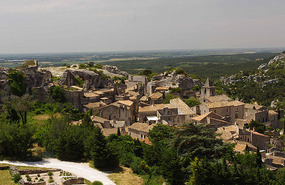
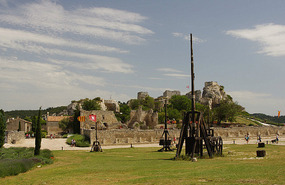
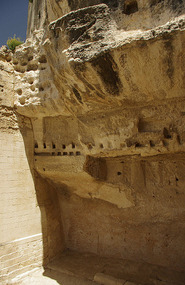
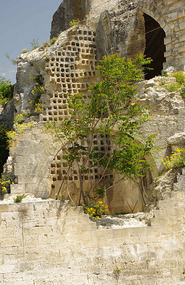
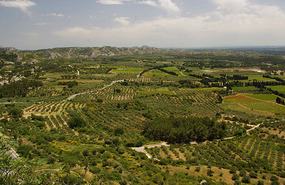

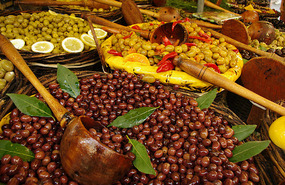

















































2025-05-22